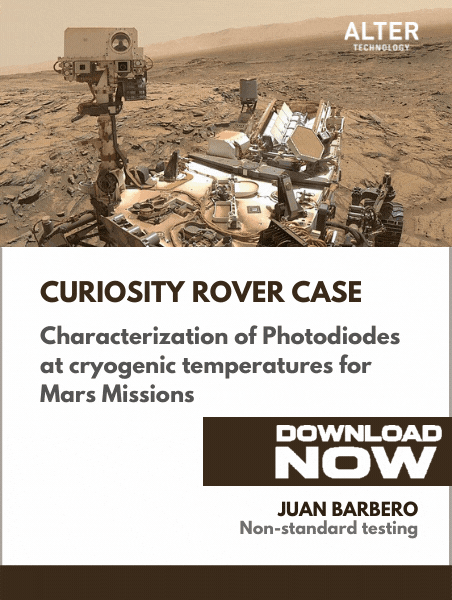Curiosity Rover: Characterization of Photodiodes at cryogenic temperatures for Mars Missions
- Posted by Juan Barbero
- On July 20, 2021
- 0

Explaining the methodology used for the characterization of the ultraviolet photodiodes used in the Curiosity rover
This success case describes the methodology used for the characterization of the ultraviolet photodiodes used in the Curiosity rover. These photodiodes are placed on the external side of the rover looking to the top for the characterization of the UV radiation at the surface of Mars and, therefore, are exposed to Mars challenging atmospheric conditions.
TEST EXPERTISE
Download the success case
Latest posts by Juan Barbero (see all)
- CHARACTERIZATION OF STRAIN GAGES - February 16, 2022
- JUICE – JUpiter ICy Moons Explorer - February 14, 2022
- Mars Curiosity Rover: Characterization of photodiodes at cryogenic temperatures - February 14, 2022

0 comments on Curiosity Rover: Characterization of Photodiodes at cryogenic temperatures for Mars Missions